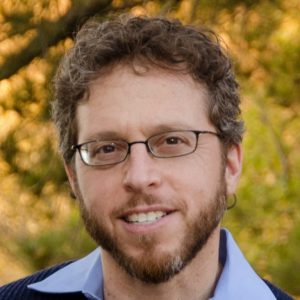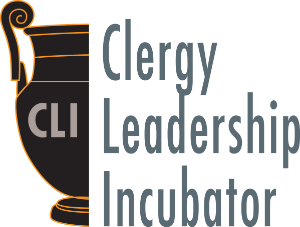Re-Thinking “Spiritual” Communities—Jewish Cohousing
Jews love community. We pray in groups (minyanim). We study in pairs (chevruta). We eat and celebrate  together in joyous gatherings (smachot).
together in joyous gatherings (smachot).
Historically, Jews also typically lived in community. We stayed together as a people through persecution in Biblical times and dispersion in diaspora by living connectedly in Jewish villages, neighborhoods, and yes, even shtetls. We returned from exile and established kibbutzim and moshavim, close-knit Israeli communities where neighbors did all manner of things together, from draining swamps and farming to eating meals and raising kids. We came to the U.S. and created a thriving Jewish village on the Lower East Side. Community has sustained us; it is in our bones.
But today, most Jews don’t live in community. Our lives, in particular our Jewish lives, tend to be compartmentalized. We experience and express our Jewishness when we find ourselves at a synagogue, a wedding, a funeral, or a Passover seder, but then we exit these Jewish bubbles and spend our daily lives in a secular world with our Jewish selves waiting for the next opportunity to emerge from hibernation. We don’t have immediate, regular, proximal connection to other Jews.
Nor are we typically connected to any of our neighbors. According to Surgeon General Vivek Murthy, the U.S. has an epidemic of social isolation that reduces life spans by the same amount as smoking 15 cigarettes a day. As G-d says in the creation story, lo tov heyot ha’adam l’vado, “it is not good for the human to be alone.”
Jewish cohousing is designed to remedy this, to restore Jewish community and social connection to daily life. It uses the Danish model of cohousing which, like an Israeli moshav, combines intentional community, shared spaces, and private homes. In 180 or so cohousing communities around the U.S., neighbors eat together a few times per week, socialize together (and separately), help look after each other’s kids, etc. They have full, private homes but also a communal kitchen and dining space, as well as access to an art studio, exercise room, playroom, guest rooms, gardens, workshop, and other community spaces. They engage together regularly in communal activities. In Jewish cohousing (which is not limited exclusively to Jews), many of these activities will involve Jewish culture, tradition, ritual, and values.
So how did we build this? Well, we haven’t yet, but we are well underway. We have established Urban Moshav, a nonprofit consultancy for creating Jewish cohousing communities (and a member of the Kenissa network). More importantly, the first of these communities, Berkeley Moshav, is under development in Berkeley, CA.
The seed for this work was planted about 20 years ago when I read an article about cohousing in the Berkeley area and was hooked. Imagine living connected to one’s neighbors, supporting each other and enjoying life together! At the time, I was starting to become deeply involved with Jewish life and at some point, a light bulb went off: Why not marry these two forms of community, cohousing and Jewish?
About nine years ago, after I’d been talking up the idea for several years, Berkeley Moshav held its first meeting. 27 people from 19 households – representing a wide variety of Jewish backgrounds – came together with a cohousing consultant. We began visioning and planning and even made a decision: We created a map of the area where we intended to build the community.
Over the next few years, we held twice monthly meetings that included meals and childcare. People joined and people left. We crafted and re-crafted a shared vision and membership policies. We held multi-day workshops with group process & governance consultants and cohousing consultants. We had some disagreements and personality conflicts that slowed us down, but we eventually moved past them and emerged with a group of eight prepared and aligned households that were ready to turn to the real estate side of the project.
Alongside Berkeley Moshav’s work, I was establishing Urban Moshav. I attended several national cohousing conferences. I found supporters. I became a community mentor for Hakhel, the international incubator of Jewish intentional communities. I did a yearlong intensive training in cohousing creation with Katie McCamant, one of the pair of architects who had brought cohousing from Denmark to the U.S. I continue to participate in an ongoing community of practice with Katie and other trainees.
About five years ago, with this groundwork laid, Berkeley Moshav began seeking a site. This was tough and discouraging. Land was scarce and expensive. Negotiations went slowly or hit obstacles. The group dwindled to four households as members moved away or bought other homes. Then three years ago our hard work and persistence paid off. A half-acre site that we’d pursued and lost became available again. With the help of an extremely generous supporter, and in partnership with the San Francisco Jewish Federation and Hebrew Free Loan of San Francisco, we secured a no-interest philanthropic loan and bought the site!
140 people attended our kickoff and site reveal. Subsequently, 65 households signed up for a series of follow-up workshops. 20 of these households eventually became “explorers,” meeting regularly and preparing to invest in the community. We were on a roll.
Then we had two setbacks. First, COVID “slowed our roll,” with the group having to pause and rework our follow-up plans and some explorers leaving due to financial uncertainty. Second and more importantly, our developer had significantly underestimated the cost of construction, and we found ourselves facing prices about 50% higher than anticipated.
It took some time, but our team – members, developer, consultants, and architect – came up with an innovative, cost-saving design. Prices remained too high for many of our explorers, but the price was now consistent with the Berkeley housing market, and six households moved forward to become members and make significant financial investments in their future homes and community.
So where are we now? We have a full architectural design for a building with 36 homes and ample shared space. Our planning application is halfway through the City of Berkeley’s approval process. We are more than one-third full, with members from both the Bay Area and around the country and additional members preparing to join. We have received national recognition in the Forward, Tablet magazine, and the Unorthodox podcast. We anticipate beginning construction during 2024 and moving in by the end of 2025.
Our biggest remaining challenge is affordability. Berkeley Moshav is diverse in age, family composition, and Jewish practice, but we also want to be economically diverse. This is difficult in the expensive Bay Area housing market, so we are seeking impact-oriented investors to create more affordability through rentals or equity sharing (a form of co-ownership).
Importantly, the members of Berkeley Moshav are becoming a community even before move-in day. We work together on projects. We gather socially to schmooze or meet potential members. We had an amazing Sukkot potluck and were very excited to host a baby shower for the couple whose child has since become our newest member! We have also met many residents of the surrounding neighborhood and look forward to hosting them for occasional events and, more generally, to contributing to the wider civic and Jewish communities.
You can think of Berkeley Moshav and Jewish cohousing as year-round, all ages Jewish summer camp for people with jobs and other responsibilities. Or like a Moishe House, where you own a private home and can live there as long as you like. Or even, yes, like a modern shtetl with its foundation of community, belonging, and togetherness. Jewish cohousing communities create the proximal, daily, ongoing, and intergenerational relationships where members and guests connect through Jewish life, values, and culture, reinventing the Jewish village that has supported our tradition and sustained the Jewish people for thousands of years.
________
Roger Studley is the founder of Urban Moshav, a non-profit development partner for Jewish cohousingcommunities, and the group manager of Berkeley Moshav, a 36-home community in Berkeley, CA. He also serves as a Hakhel advisor for Jewish cohousing groups and has contributed to six of its international Jewish Intentional Community Conferences. Roger is a certified cohousing consultant and an affiliate of CoHousing Solutions, whose principal, Kathryn McCamant, is the foremost U.S. expert on cohousing development.

